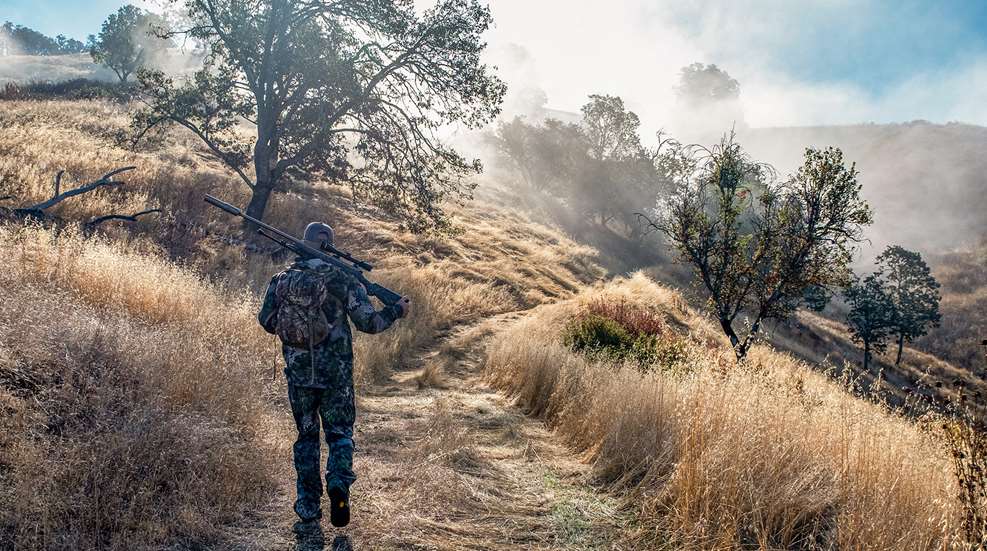
One of the things I like best about hunting is the pursuit is always full of surprises. So imagine my surprise when early last fall as I packed for an Oregon hunt I learned I would not hunt Columbian blacktails there but Columbian whitetails. Bonus, I thought.
When months earlier I accepted the invitation from my friend Shawn Skipper of Leupold & Stevens to hunt Oregon, I was excited because it would be my first opportunity to hunt Columbian blacktails. I thought that was a bonus because, as I’ve also said many times, my favorite hunt is the next species or next region I’ve never hunted before. A Columbian blacktail hunt in Oregon checked both boxes.
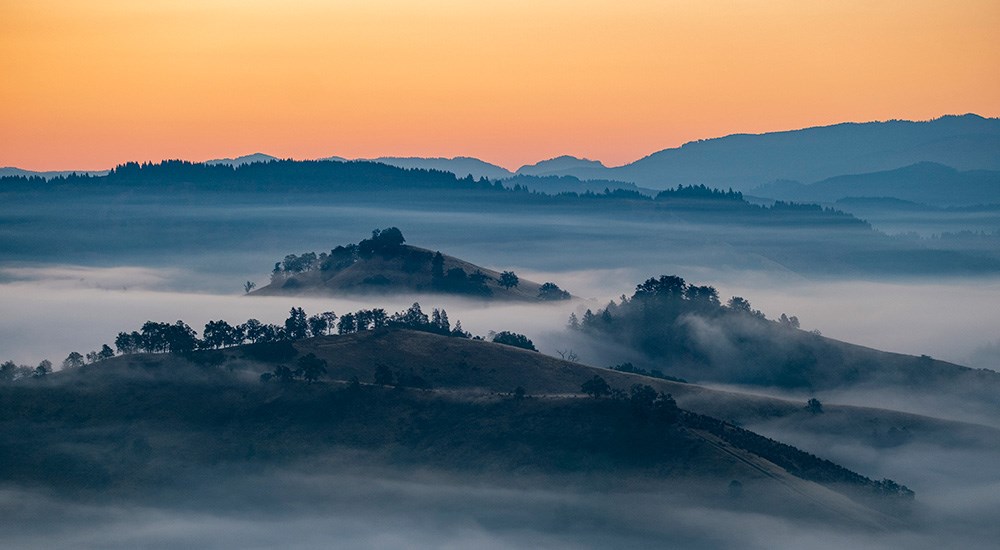
However, by the time I prepared to travel to Oregon, I had to admit I’d already hunted and killed a Columbian blacktail in California wine country (more on that later this year). Didn’t plan it that way; when I lined up my fall, I thought the Oregon hunt would be my first crack at “real” blacktails. I knew California didn’t hold its own whitetails or mule deer, exactly, but its own kind of deer. However, in wine country, even before I pulled the trigger, I learned that indeed Columbian blacktails range as far south as California’s Central Coast. Well, I’d worry about “firsts” later, I thought.
So when Shawn told me, “No, man, you’re hunting Columbian whitetails. There aren’t many of them. Oregon issues only a handful of tags each year. And for three years now I’ve locked in two of them; this week one of them is yours.”
That’s what I call a super-bonus. Turns out Shawn three years ago discovered the little-known program in Oregon when he met an outfitter who guides for Columbian whitetails, among other game. One of the ranches the outfitter hunts in the North Umpqua River Valley is provided two Columbian whitetail tags each year. That ranch, split into two segments, is really quite large, I learned. It stands in stark contrast to Oregon’s small Columbian whitetail program.
It was mid-September last year when I joined Shawn along with John Nosler and Justin Moore of Nosler Inc. to hunt the diminutive deer with Jody Smith Guide Service near Roseburg, Ore. John and I held the tags and carried Nosler Model 21 rifles in 27 Nosler fitted with Leupold VX-3HD scopes.
■ ■ ■
The first morning, a Saturday, was filled with fog. In the dark in a side-by-side, five of us drove to the top of the mountain then four of us hiked down to sit in two spots as Jody hiked another direction to get a bead on deer activity a ridge away.
As we sat on a hillside in soup so thick we couldn’t at times see 25 yards, Shawn explained our hunt.
“The first year we hunted this ranch we didn’t exactly know what we were doing,” Shawn explained. “Jody had just gained access here, and he didn’t know the land or exactly how to pattern these deer. They have the run of this valley. They go wherever they want. Sure, they’re active at daylight, they feed at dusk—stuff like that is all true. But they’re not pressured; there aren’t enough hunters who get tags every year to pressure them. The past three years, our best bets have been hunting low; they always seem to stay low. Blacktails go high, but these whitetails seem to mostly stay low.
“Anyway,” he continued, “now Jody drives to the top of the hill and hunts down; easier that way. We figured that out last year. Beats what the hunters on public land next to us have to do.”
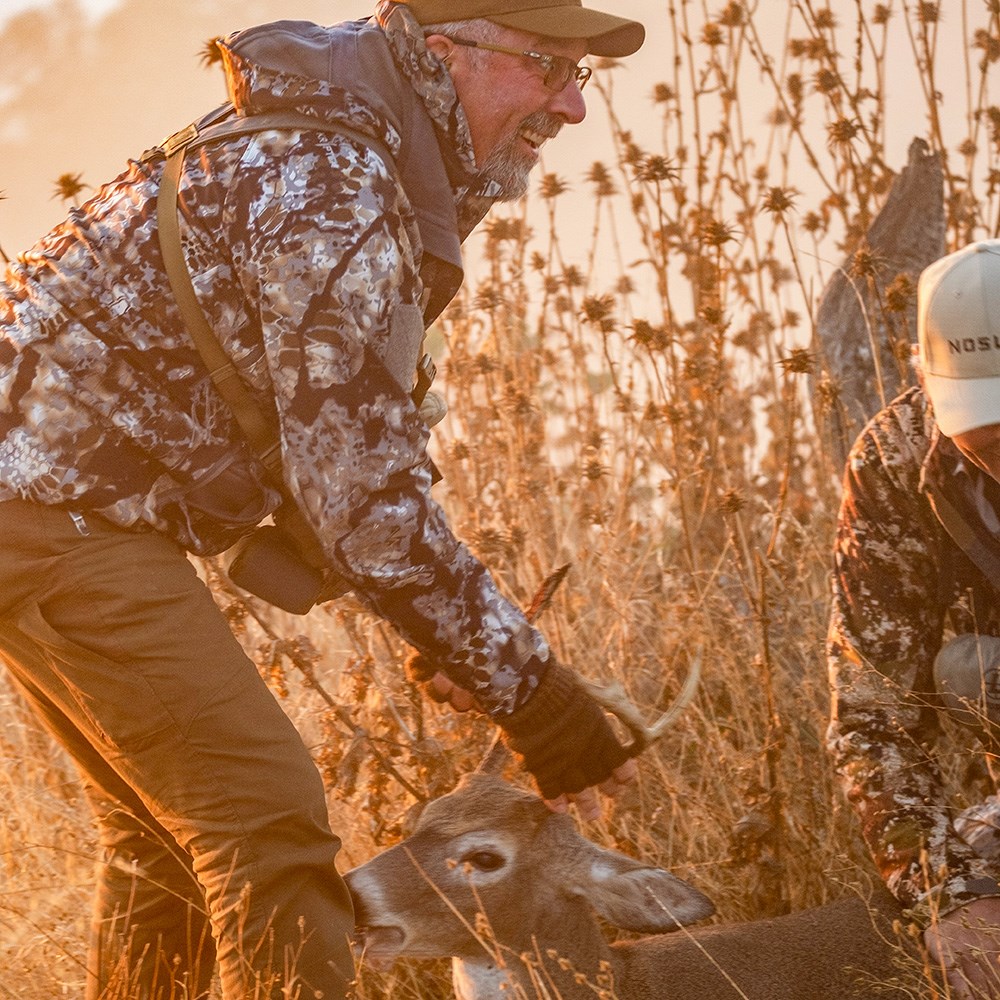
Through breaks in the fog I surmised what he meant. We sat on a mountainside of pastureland overlooking bottomland also filled with pastures. There really is no agriculture in this valley, I observed; just cattle … and hay. The terrain is steep. Hunters can’t use motorized vehicles on public land. Their only option is to hike up in the dark then find a spot to sit or work their way down. Problem with that plan, of course, is you may never know what you bump in the dark.
After that introduction we both dozed on the ground in the fog, figuring we’d stir when visibility improved … and by the time that occurred it was late in the morning and we couldn’t expect much deer movement. We saw a handful of turkeys, and that was it for our morning hunt. I did notice how close we were to a handful of homes, though. Many folks live close to the two-lane blacktop that runs through the valley, but the ranch we hunted spanned the mountain above them.
That evening we hunted bottomland, a hayfield next to the river. We set up amid haybales in the heat and waited for a magic hour that never occurred. In the evening sun sweat trickled down our brows, but that was the only movement we detected. As we packed up in the dark we wondered whether the heat tamped down deer movement.
■ ■ ■
The next morning, Shawn and I snuck into the hayfield from a different direction and, after nothing stirred, later still-hunted a couple of miles of riverbottom land.
I worked slowly. I relish still-hunting. The key to success with the practice is to never move fast. It’s best to take your time; to stand and cogitate, to think long and hard about where you’ll walk, when you’ll take your next step. A deer could stand up just about anywhere in this country, I realized. “Remember there are blacktails in here, too,” Shawn admonished. “Your tag allows you to shoot any deer. But if you want a whitetail, be sure of your target.”
Meanwhile John and Justin were up on the hill in the same spot as the day before. They didn’t see any deer, either, but they did see a cougar. Watched it for some time. Justin captured some video of the cat. The bugger was plying its trade just uphill from several homes. Just across the fence from where the hunters saw the cougar lay a family’s back yard with a swingset.
No wonder nothing was moving on the mountain. These deer may not appreciate hunting pressure from humans, but they surely feel pressure from a four-legged predator.
The Oregon residents, that is, everyone but me, held cougar tags. So naturally they all admitted they’d bust a deer hunt to shoot a cat. Besides, a shot through our Nosler suppressors wouldn’t stir much. That evening I went back to the hayfield while John and Justin posted, Jody searched new land and Shawn borrowed a Nosler rifle, found a spot on the mountainside and hoped to see the cat.
No one saw the cat, and no one saw any deer, either—not high, not low, not me in the hayfield. We hoped our luck would change Monday morning.
■ ■ ■
The Columbian whitetail is one of 38 subspecies of white-tailed deer stretching from South America to North America. The deer is unique to Oregon and southwest Washington. It lives along the Lower Columbia River in Oregon and Washington and in the Umpqua River Basin near Roseburg, Ore., in low-lying riparian areas and in brushy woodlots of cottonwood, willow, alder and spruce. In Oregon, it shares habitat with the blacktail.
Its tawny coat is similar to most whitetails. Body size is quite small, I’d say about the same size as a Coues deer. Unlike other whitetail subspecies that may breed at six months of age, female Columbian whitetails first breed at 18 months, and they usually have only one fawn. Bucks also first breed at 18 months.
The deer was federally listed as a threatened species in 1967, and upon creation of the Endangered Species Act in 1978 it was listed as endangered. But in 2003, after decades attempting to preserve it, the Umpqua Basin population segment was removed from the ESA list. Oregon Fish and Wildlife and the Bureau of Land Management collaborated to conserve the segment instead, and in 2005 tags began to be issued. Something must’ve clicked. In the 1980s the total population was estimated to number 2,500, but today the subspecies is said to number 6,000. Today Oregon manages it in just a few controlled hunts each year in the Umpqua Basin. Tags are, of course, few, and available only through a draw or through a landowner program.
■ ■ ■
Monday morning Shawn left camp to drive back to Portland to handle some work that could be done only at Leupold HQ. That left John and me as hunters, Justin as photographer/videographer/camp jack and Jody as guide to continue our quest for North Umpqua River Valley Columbian whitetails.
This morning, it didn’t take long to find deer. Atop the mountain we stood above the fog. I wondered whether it would hang low or eventually engulf us but as we split up we could see far and wide. Jody wanted me to veer left and walk along a ridgetop paralleling a road that dove a bit to the right. He and John and Justin would walk that road, and somewhere down the line we planned to link up again. I hadn’t taken 20 steps when I spied antlers right in front of me.
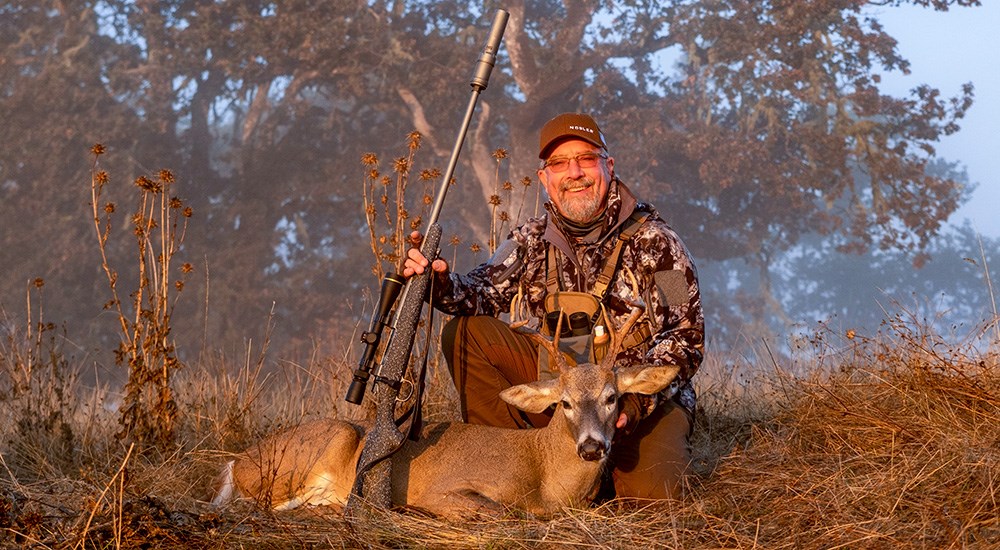
The guys weren’t far away. I snapped my fingers and hissed, “Hey, hey!” They looked and I pointed. I dropped to my left knee, because I knew exactly what I would do if a peek through the Santiam binocular revealed what I thought my eyes told me. I whipped off my pack, withdrew my shooting sticks, shook them into shape and set up the Model 21 atop them in the reverse kneel position, resting my right elbow on my right knee for a dead steady rest.
I knew the deer was a shooter but I wanted a closer look than 10X had revealed through the binocular, just to be sure. The deer wasn’t nervous; I had time. As soon as I cranked the Leupold to 14X I realized I’d made a mistake—I couldn’t find the buck! You idiot, I thought as I cranked back down to 6X.
I didn’t have a great shot—not yet. I could shoot the buck in the neck, but I wanted a bit better presentation. I needed it to take a step or two—and it did. The buck looked at me, wondering … it stepped forward once, twice, craning its neck to peer at me … and I squeezed the trigger and put a Nosler AccuBond in it. The buck was dead when he hit the ground. The shot was only 51 yards.
The buck was a small 4x4 with velvet hanging off one side. Back east it would be a 2-year-old, maybe, and I’d never shoot it. But this was a bucket list tag I didn’t plan to eat. As we gazed at my trophy, Jody confirmed my thoughts. The deer may have been 3 or 4 years old, he explained. Fully mature, it weighed perhaps 130 pounds. As the morning fog engulfed us, I basked in a quality hunt for a quality deer I’ll probably never be able to hunt again.
■ ■ ■
That evening John connected, too, and just like that the hunt ended two days early. He and Justin had glimpsed a big buck on the mountainside where they hunted—but only once. Jody had seen it, too, in a different location. That afternoon they compared notes, and we checked images on a trail camera; sightings and digital images teamed to suggest John and Justin should sit in the same spot where they spent Saturday and Sunday. When they did, Jody and I took up positions uphill to act as lookouts—for deer or a cat.
In the waning heat of the afternoon, Justin texted us to say, “Buck down. We’re just waiting to be sure now.”
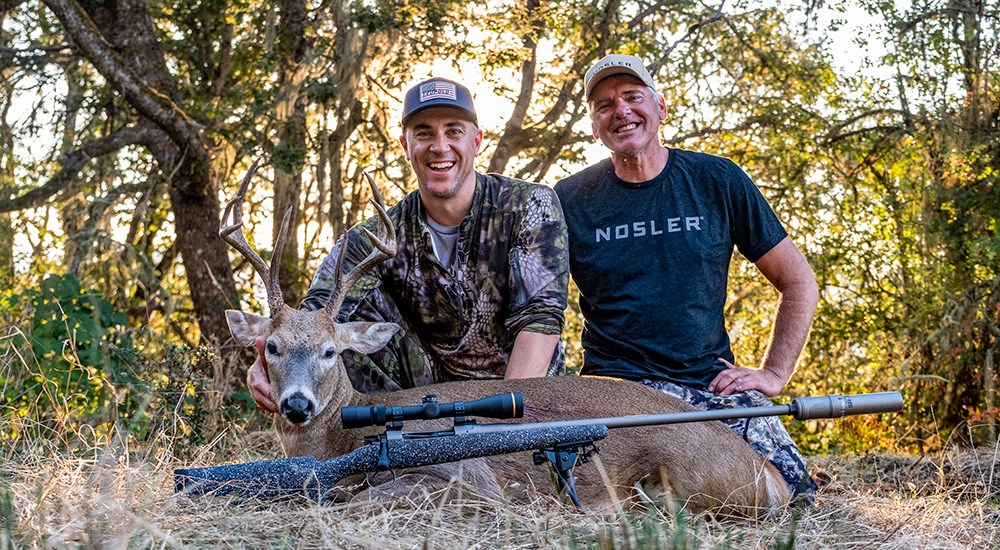
Sure enough, the big bugger had shown himself on the mountainside, as hoped, and John had put him down at 250 yards. This buck was a stunner. Back east it would be called a basket-racked 8-point. Many of us would shoot it no matter where it lived. But back east I may pass on it; I’ve shot “this deer” many times, after all. John Nosler has, too. But in Oregon when the quarry is a Columbian whitetail this buck passes for a stud. Its body is bigger, its neck is thicker than my deer. Its rack dwarfs mine. If my deer truly was a 4-year-old, this deer must’ve been a 6-year-old. What a trophy.
Each of these bucks are about as good as it gets for Columbian whitetails. Indeed, hunts like this are about as good as it gets.
Jody Smith Guide Service
Columbian whitetails are only a small part of Jody Smith’s outfitting business. He also guides for blacktails, mule deer, Roosevelt elk, bears and turkeys. He also fishes—a lot—for sturgeon, chinook, shad, steelhead and smallmouth bass. He’s a premier guide on land and water. If you’re interested in Oregon and need a guide, give him a call.
The Oregon Team: Nosler and Leupold
Nosler started as an Oregon bulletmaker in 1948 when John Amos Nosler produced his revolutionary Partition for big game. In the 21st century the company has expanded horizontally to produce loaded ammunition, rifles and suppressors.
The Model 21 is the company’s latest bolt-action rifle. Released in 2021, it is a push-feed with a dual-lug bolt available as a long- or short-action. Shilen barrels are 22 or 24 inches long and stainless steel in a No. 3 contour; muzzles are threaded. The trigger comes from TriggerTech. Exterior metalwork is covered in gray Cerakote. The McMillan Hunter’s Edge carbon fiber stock is pillar-bedded and covered with a pebble finish for durability and purchase.
Last year Nosler entered the suppressor market, and today it builds four models. The SR-30Ti suppressor I used is built of titanium and fits all .30 caliber and smaller firearms. It weighs only 13.2 ounces and measures 7.9 inches long. Thread pitch is ⅝x24.
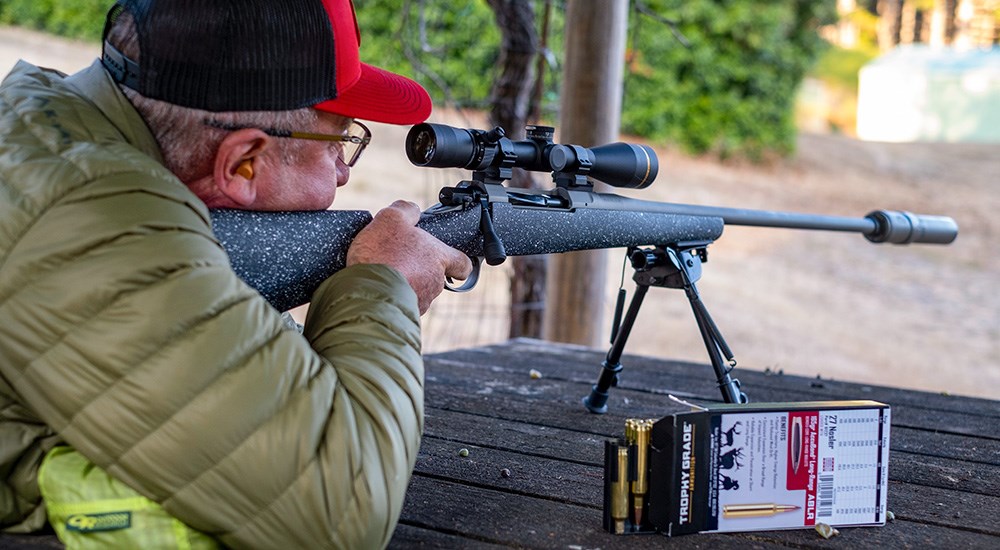
Our rifles were chambered in 27 Nosler and fired Nosler Trophy Grade Long Range ammunition. Naturally, the high-performance line fires the Nosler AccuBond Long Range from Nosler brass. Our projectiles weighed 165 grains. My shot was 51 yards; John Nosler’s shot was 250 yards. We both recovered our bullets.
Leupold & Stevens launched in Oregon in 1907 as a maker of surveying equipment. In 1947 the company made its first riflescope. Called the Plainsman, it was America’s first fogproof riflescope.
Our rifles were fitted with Leupold VX-3HD 4.5-14x40mm scopes. The lineup incorporates a 3:1 zoom ratio and Leupold’s Elite Optical System including high-definition scratch-resistant lenses and guard-ion lens coatings. Most importantly it uses Leupold’s CDS-ZL elevation dial; each scope purchase includes a voucher a hunter may cash in to procure one. Mail it back to the company along with personalized data, and Leupold will custom-engrave a turret that mates the scope with your pet hunting load. The one-revolution CDS-ZL dial eliminates the need to hold over as it provides precise elevation adjustments. And with ZeroLock, you can be assured the dial only moves when you want it to move. Like all Leupold riflescopes it is waterproof, fogproof and shockproof.
BX-5 Santiam HD binoculars are built on an ergonomic dual-bridge design to cut down on muscle fatigue in your hands and arms and in your eyes. The 10X unit weighs only 24.3 ounces. The binos are built around Leupold’s Professional Grade Optical System to deliver high light transmission, superior resolution and exceptional glare reduction. Exterior lens surfaces are treated with DiamondCoat 2, an ion-assist coating that delivers high light transmission and exceptional abrasion resistance. In Oregon last fall I used a 10x42; in South Africa last summer I used a 15x56. Both binoculars handled wonderfully and delivered bright images morning, noon and night.



































